
Canadian football is a sport played in Canada in which two teams of 12 players each compete for territorial control of a field of play 110 yards (101 m) long and 65 yards (59 m) wide attempting to advance a pointed oval-shaped ball into the opposing team's scoring area.
In a sport or game, sudden death is a form of competition where play ends as soon as one competitor is ahead of the others, with that competitor becoming the winner. Sudden death is typically used as a tiebreaker when a contest is tied at the end of regulation (normal) playing time or the completion of the normal playing task.
Overtime or extra time is an additional period of play specified under the rules of a sport to bring a game to a decision and avoid declaring the match a tie or draw where the scores are the same. In some sports, this extra period is played only if the game is required to have a clear winner, as in single-elimination tournaments where only one team or players can advance to the next round or win the tournament.
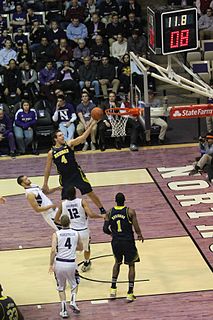
A shot clock is a countdown timer used in a variety of games and sports, proving a set amount of time that a team may possess the object of play before attempting to score a goal. Shot clocks are used in several sports including basketball, water polo, lacrosse, poker, ringette, snooker, korfball, and ten-pin bowling. It is analogous with the play clock used in American and Canadian football, and the pitch clock used in baseball. This article deals chiefly with the shot clock used in basketball.
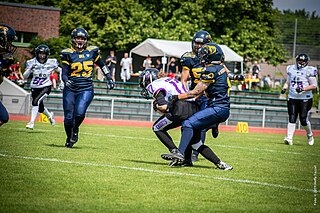
American and Canadian football are gridiron codes of football that are very similar; both have their origins in rugby football, but some key differences exist.
In sports, a time-out or timeout is a halt in the play. This allows the coaches of either team to communicate with the team, e.g., to determine strategy or inspire morale, as well as to stop the game clock. Time-outs are usually called by coaches or players, although for some sports, TV timeouts are called to allow media to air commercial breaks. Teams usually call timeouts at strategically important points in the match, or to avoid the team being called for a delay of game-type violation, such as the five-second rule in basketball.

Gameplay in American football consists of a series of downs, individual plays of short duration, outside of which the ball is dead or not in play. These can be plays from scrimmage – passes, runs, punts, or field goal attempts – or free kicks such as kickoffs and fair catch kicks. Substitutions can be made between downs, which allows for a great deal of specialization as coaches choose the players best suited for each particular situation. During a play, each team should have no more than 11 players on the field, and each of them has specific tasks assigned for that specific play.
In gridiron football, clock management is the manipulation of a game clock and play clock to achieve a desired result, typically near the end of a match. It is analogous to "running out the clock" seen in many sports, and the act of trying to hasten the game's end is often referred to by this term. Clock management strategies are a significant part of American football, where an elaborate set of rules dictates when the game clock stops between downs, and when it continues to run.

The rules of basketball are the rules and regulations that govern the play, officiating, equipment and procedures of basketball. While many of the basic rules are uniform throughout the world, variations do exist. Most leagues or governing bodies in North America, the most important of which are the National Basketball Association and NCAA, formulate their own rules. In addition, the Technical Commission of the International Basketball Federation (FIBA) determines rules for international play; most leagues outside North America use the complete FIBA ruleset.
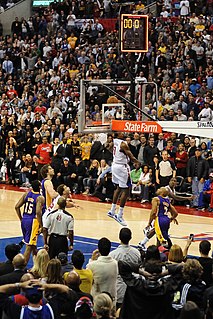
In basketball and other such timed sports, a buzzer beater is a shot that is taken before the game clock of a quarter, a half, or an overtime period expires but does not go in the basket until after the clock expires and the buzzer sounds hence the name "buzzer beater". The concept normally applies to baskets that beat an end-of-quarter/half/overtime buzzer but is sometimes applied to shots that beat the shot clock buzzer.
In sports, running out the clock is the practice of a winning team allowing the clock to expire through a series of pre-selected plays, either to preserve a lead or hasten the end of a one-sided contest. Such measures expend time, but do not otherwise have a tactical purpose. This is usually done by a team that is winning by a slim margin near the end of a game, in order to reduce the time available for the opposing team to score. Generally, it is the opposite strategy of running up the score.

In American football and Canadian football, a quarterback kneel, also called taking a knee, genuflect offense, kneel-down offense, or victory formation occurs when the quarterback immediately kneels to the ground, ending the play on contact, after receiving the snap. It is primarily used to run the clock down, either at the end of the first half or the game itself, to preserve a lead. Although it generally results in a loss of a yard and uses up a down, it minimizes the risk of a fumble, which would give the other team a chance at recovering the ball.

This glossary of basketball terms is a list of definitions of terms used in the game of basketball. Like any other major sport, basketball features its own extensive vocabulary of unique words and phrases used by players, coaches, sports journalists, commentators, and fans.
In most levels of professional American football, the two-minute warning is a suspension of play that occurs when two minutes remain on the game clock in each half of a game, i.e., near the end of the second and fourth quarters, and overtime. Its effect on play is similar to that of a timeout: the game clock stops and the teams gather to discuss strategy. The suspension of play is two minutes long, the same as the short two-minute intermissions between quarters within each half. Its name reflects its origins as a point in the game where the officials would inform the teams that the half was nearly over, as the official game clock was not displayed in the stadium at the time the two-minute warning was created.
The Trent Tucker Rule is a basketball rule that disallows any regular shot to be taken on the court if the ball is put into play with under 0.3 seconds left in game or shot clock. The rule was adopted in the 1990–91 season and named after New York Knicks player Trent Tucker, and officially adopted in FIBA play starting in 2010. When the WNBA was established in 1997, this rule was adopted too.

A penalty shot or penalty kick is a play used in several sports whereby a goal is attempted during untimed play. Depending on the sport, when a player commits certain types of penalties, the opposition is awarded a penalty shot or kick attempt. The rules on how a player attempts a penalty shot or kick also varies between sports.

In gridiron football, a penalty is a sanction called against a team for a violation of the rules, called a foul. Officials initially signal penalties by tossing a bright yellow or orange colored penalty flag onto the field toward or at the spot of a foul.
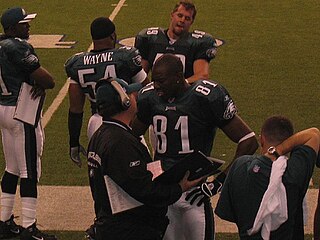
In sports, out of bounds refers to being outside the playing boundaries of the field. Due to the chaotic nature of play, it is normal in many sports for players and/or the ball to go out of bounds frequently during a game. The legality of going out of bounds, and the ease of prevention, vary by sport. In some cases, players may intentionally go or send the ball out of bounds when it is to their advantage.
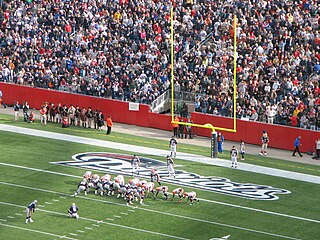
The conversion, try, or convert occurs immediately after a touchdown during which the scoring team is allowed to attempt to score one extra point by kicking the ball through the uprights in the manner of a field goal, or two points by bringing the ball into the end zone in the manner of a touchdown.










